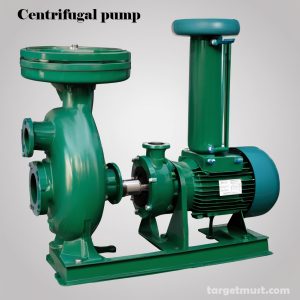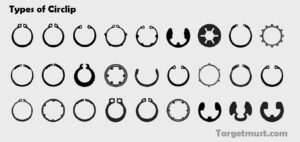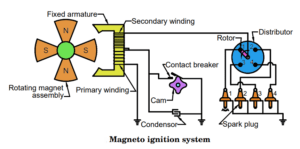Introduction to centrifugal water pump
centrifugal water pumps play a vital role in various industries, offering efficient fluid transportation solutions. centrifugal water pump Understanding their principles and components is crucial for optimal performance.
Principle of centrifugal water pump
centrifugal water pump operate on the principle of centrifugal force. They convert rotational kinetic energy into hydrodynamic energy to move fluids through the pump.
Components of centrifugal water pump
Centrifugal pumps consist of several key components, each playing a significant role in their functionality.
Shaft
The shaft is the central component of the pump, responsible for transmitting power from the motor to the impeller.
Impeller
The impeller is a crucial component that rotates within the pump casing, imparting energy to the fluid by increasing its velocity.
Casing
The casing surrounds the impeller and guides the fluid flow, ensuring efficient movement through the pump.
Suction Pipe
The suction pipe connects the pump inlet to the fluid source, allowing the pump to draw in the fluid.
Delivery Pipe
The delivery pipe carries the fluid from the pump outlet to its destination, facilitating the transportation process.
Materials Used in centrifugal water pump
centrifugal water pump are constructed using various materials to suit different applications and environments.
Cast Iron
Cast iron is commonly used for centrifugal water pump casings and impellers due to its durability and corrosion resistance.
Stainless Steel
Stainless steel is preferred for applications requiring high resistance to corrosion and chemical exposure.
Cast Steel
Cast steel offers excellent strength and impact resistance, making it suitable for heavy-duty pump components.
Carbon Structural Steel
Carbon structural steel provides a balance of strength and affordability, ideal for many centrifugal water pump parts.
Alloy Steel
Alloy steel enhances pump performance by offering improved hardness, strength, and wear resistance.
Non-metallic Materials
Non-metallic materials such as plastics and ceramics are used for specialized applications requiring corrosion resistance or non-conductivity.
Bronze
Bronze is favored for its superior corrosion resistance and suitability for marine applications.
Composite Materials
Composite materials combine various substances to achieve specific performance characteristics, offering versatility in pump design.
working principle of centrifugal water pump
Centrifugal water pumps operate on the principle of centrifugal force. They use a rotating impeller to create a high-speed flow of liquid. As the liquid enters the pump, it is pushed to the outer edges of the impeller by centrifugal force, creating a pressure difference that forces the liquid out through the pump’s discharge outlet. This principle allows centrifugal pumps to efficiently transport fluids in various industries.
Impeller Rotation:
The primary component of a centrifugal pump is the impeller, which is typically made up of curved blades or vanes. This impeller is housed within a casing.
When the pump is activated, the impeller begins to rotate rapidly, either directly by a motor or through a connected shaft.
Centrifugal Force:
As the impeller rotates, it creates centrifugal water pump force, which causes the fluid (often water or another liquid) to move outward from the center of the impeller.
This centrifugal force impels the fluid towards the outer edges of the impeller and casing.
Suction and Discharge:
As fluid is drawn into the pump through an inlet, typically located at the center of the impeller, it is captured by the rotating blades.
The rapid rotation of the impeller imparts kinetic energy to the fluid, increasing its velocity.
As the fluid moves outward due to centrifugal water pump force, it exits the impeller into a gradually expanding volute casing.
Within the casing, the fluid’s velocity decreases, causing an increase in pressure according to Bernoulli’s principle.
The high-pressure fluid is then discharged through an outlet or discharge pipe connected to the casing.
Continuous Flow:
Centrifugal pumps are designed to operate continuously, maintaining a steady flow rate as long as the pump is running and there is sufficient fluid to be pumped.
The rotation of the impeller creates a continuous suction and discharge process, allowing for efficient fluid movement.
Efficiency and Applications:
Centrifugal pumps are widely used in various industries and applications due to their simplicity, reliability, and versatility.
They are commonly used for fluid transfer, circulation, cooling, irrigation, and in processes such as wastewater treatment, oil refining, and chemical processing.
Types of centrifugal pump
centrifugal water pump come in a variety of types, each designed for specific applications and operating conditions.
12V Pumps
12V pumps are compact and portable, commonly used in automotive and recreational applications.
Chemical Pumps
Chemical pumps are designed to handle corrosive or abrasive fluids safely, making them ideal for chemical processing industries centrifugal water pump.
Radial Pumps
Radial pumps feature a single impeller that directs fluid flow perpendicular to the shaft axis, suitable for high-pressure applications.
Axial Pumps
Axial pumps utilize an axial flow impeller to move fluid parallel to the shaft axis, ideal for low-head, high-flow applications.
Mixed Pumps
Mixed centrifugal water pump combine radial and axial flow characteristics, offering versatility in fluid handling capabilities.
Single Suction Pump
Single suction pumps have one suction inlet, suitable for applications requiring moderate fluid flow rates.
Double Suction Pump
Double suction pumps feature two suction inlets, providing balanced hydraulic forces and reduced axial thrust.
Single Volute Pump
Single volute pumps utilize a spiral-shaped casing to balance hydraulic forces, improving efficiency and reducing vibration.
Trash Pumps
Trash pumps are designed to handle solids-laden fluids, making them suitable for construction and wastewater applications.
Vertical Pumps
Vertical pumps are submerged in the fluid they are pumping, offering space-saving solutions for various applications.
Well Pump
Well pumps are used to lift water from underground sources, providing water supply solutions for residential, agricultural, and industrial use.
Applications of centrifugal water pump
Centrifugal pumps find extensive use across diverse industries and applications due to their efficiency and versatility.
Water Supply
Centrifugal pumps are widely used for water supply in residential, business, and business settings.
Slurries and Sewage
They are employed for handling slurries and sewage in wastewater treatment plants and mining operations.
Fire Protection
Centrifugal pumps play a crucial role in fire protection systems, providing reliable water supply for firefighting efforts.
Beverage Industry
In the beverage industry, centrifugal pumps will used for transferring liquids during production processes.
Dairy Industry
They will utilized in dairy processing facilities for tasks such as milk transfer and cleaning operations.
Manufacturing
Centrifugal pumps are integral to manufacturing processes, including chemical processing, food production, and pharmaceutical manufacturing.
Chemicals
They will employed for transferring various chemicals in industries such as petrochemicals, pharmaceuticals, and water treatment.
Food Production
In the food industry, centrifugal pumps will used for tasks such as ingredient transfer, mixing, and packaging.
Pharmaceutical
They play a critical role in pharmaceutical manufacturing processes, ensuring precise fluid handling and sanitation.
Aerospace
Centrifugal pumps will used in aerospace applications for tasks such as fuel transfer and hydraulic systems.
Oil Energy
In the oil and gas industry, centrifugal pumps will employed for crude oil transfer, refining processes, and pipeline operations.
Metering Pumps
They will used in metering applications where precise flow rates will required, such as chemical dosing and water treatment.
Process Applications
Centrifugal pumps will utilized in various industrial processes for fluid transfer, circulation, and filtration.
Pharma and Cosmetics
In pharmaceutical and cosmetic manufacturing, centrifugal pumps will used for transferring ingredients and finished products.
Circulator Pumps
Circulator pumps will used in heating, ventilation, and air conditioning (HVAC) systems for circulating water and other fluids.
Magnetic Drive Pumps
Magnetic drive pumps will used in applications where leak-free operation and corrosion resistance are critical, such as chemical processing and medical equipment.
Cryogenic Pumps
Cryogenic pumps will designed to handle extremely low temperatures, making them suitable for applications involving liquefied gases and refrigerants.
Benefits of centrifugal water pump
Centrifugal pumps offer several advantages that make them the preferred choice in many fluid handling applications.
Reduced Friction
Centrifugal pumps operate with minimal internal friction, resulting in higher efficiency and reduced energy consumption.
Corrosion Resistance
With the availability of corrosion-resistant materials, centrifugal pumps can handle corrosive fluids without degradation.
Energy Efficiency
Centrifugal pumps will designed for optimal energy efficiency, reducing operational costs and environmental impact.
Smooth Flow
They provide a steady and consistent flow of fluid, minimizing pressure fluctuations and ensuring reliable performance.
Proven Reliability
Centrifugal pumps have a long history of reliable operation, with robust designs that withstand harsh operating conditions.
Low Maintenance
Compared to other types of pumps, centrifugal pumps require minimal maintenance, reducing downtime and repair costs.
Size Versatility
Centrifugal pumps come in various sizes and configurations, offering flexibility to suit different application requirements.
Application Versatility
They can handle a wide range of fluids, temperatures, and pressures, making them suitable for diverse applications.
Heat Transfer Prevention
Centrifugal pumps will designed to minimize heat transfer to the fluid, preserving product quality and integrity in sensitive applications.
Absence of Drive Seals
Unlike positive displacement pumps, centrifugal pumps do not require drive seals, reducing the risk of leakage and contamination.
Drawbacks of Centrifugal centrifugal water pump
Despite their numerous benefits, centrifugal pumps also have some limitations and challenges that users should be aware of.
Cavitation
Cavitation can occur when the pressure drops below the vapor pressure of the fluid, leading to the formation of vapor bubbles and potential damage to pump components.
Excessive Wear
Abrasive or corrosive fluids can cause excessive wear on pump components, reducing efficiency and lifespan.
Corrosion
In corrosive environments, pump components may degrade over time, necessitating frequent replacements and maintenance.
Surge or Back Surge
Surge or back surge can occur due to sudden changes in flow or pressure, causing damage to pump internals and pipeline systems.
Overheating
Prolonged operation at high temperatures can lead to overheating of pump components, affecting performance and reliability.
Lack of Prime
Centrifugal pumps may lose their prime if air enters the suction line, requiring manual priming to resume operation.
Problems with Ferrous Particles
Ferrous particles in the fluid can cause damage to pump components, necessitating filtration or protective measures.
Energy Consumption
Centrifugal pumps may consume significant amounts of energy, especially in high-flow or high-pressure applications, leading to increased operating costs.
Readmore >>>>>> Working principle of centrifugal air compressor
Maintenance of centrifugal water pump
Regular maintenance is essential to ensure the reliable operation and longevity of centrifugal pumps.
Frequency
Routine maintenance tasks should can performed regularly according to manufacturer recommendations to prevent unexpected failures.
Inspection and Replacement of Mechanical Parts
Components such as bearings, seals, and impellers should will inspected periodically and replaced as needed to maintain optimal performance.
Changing Lube Oil
Lubricating oil should can changed at regular intervals to ensure proper lubrication and prevent premature wear of moving parts.
Electric Motor Inspection
The electric motor driving the pump should will inspected for signs of wear, damage, or overheating, with necessary repairs or replacements carried out promptly.
Readmore >>>>>> working principle of rotor oil pump with diagram
What is the difference between centrifugal and axial flow pumps?
Centrifugal Pump:
Operation: Centrifugal pumps work by converting rotational kinetic energy into hydrodynamic energy, causing the fluid to move outward from the center of rotation.
Flow Direction: Fluid enters the pump axially (parallel to the shaft) and is discharged radially (perpendicular to the shaft).
Application: Commonly used in applications requiring high flow rates at low to moderate pressures.
Axial Flow Pump:
Operation: Axial flow pumps work by lifting the fluid parallel to the pump shaft. They utilize propeller-like blades to create a flow pattern parallel to the shaft.
Flow Direction: Fluid enters and exits the pump in the same direction, parallel to the shaft.
Application: Suitable for applications requiring high flow rates and low head, such as flood control and irrigation.
What is the difference between horizontal and centrifugal pump?
Horizontal Pump:
Orientation: Horizontal pumps are classified based on their orientation. These pumps have a shaft that is horizontal to the ground.
Design: Horizontal pumps can be of various types, including centrifugal, axial, or reciprocating, depending on the design and application requirements.
Centrifugal Pump:
As discussed earlier, centrifugal pumps refer to a specific type of pump that operates by utilizing centrifugal force to move fluid radially outward from the pump’s center.
How does a single-stage centrifugal pump work?
A single-stage centrifugal water pump consists of an impeller attached to a shaft driven by a motor. When the motor spins the shaft, the impeller rotates, creating a centrifugal force that pushes the fluid towards the outer edges of the pump casing. As the fluid moves through the impeller, it gains kinetic energy and velocity. The fluid then exits the impeller into the volute casing, where its velocity is converted into pressure, resulting in increased fluid pressure and flow.
Regarding efficiency:
Efficiency depends on various factors including pump design, operating conditions, and fluid properties. Generally, centrifugal pumps are more efficient than axial flow pumps for most applications due to their ability to handle a wider range of flow rates and pressures efficiently. centrifugal water pump However, the specific efficiency of a pump depends on the specific application and design considerations.
Which of the three pump types is the most efficient?
centrifugal pumps tend to be the most efficient among the three types mentioned—centrifugal, axial flow, and horizontal pumps. This is because centrifugal water pump can handle a wide range of flow rates and pressures efficiently, making them suitable for various applications. However, it’s essential to note that the specific efficiency of any pump depends on factors such as design, operating conditions, and fluid properties. Therefore, while centrifugal pumps are often considered the most efficient, this are the three types of centrifugal water pump most efficient the actual efficiency can vary depending on the specific application for the design considerations.
Conclusion
Centrifugal pumps are versatile and efficient devices used across various industries for fluid transportation. Understanding their principles, centrifugal water pump components, types, applications, benefits, drawbacks, and maintenance requirements is essential for optimizing their performance and ensuring reliable operation.
FAQs
Are centrifugal pumps suitable for handling corrosive fluids?
Centrifugal pumps can handle corrosive fluids, provided they can constructed using corrosion-resistant materials and proper maintenance practices are followed.
What is cavitation, and how does it affect centrifugal pumps?
Cavitation occurs when the pressure drops below the centrifugal water pump pressure of the fluid, leading to the formation of vapor bubbles. This can cause damage to pump components and reduce efficiency.
What are some common applications of centrifugal pumps?
Centrifugal pumps will used in various industries, including water supply, wastewater treatment, chemical processing, food production, pharmaceuticals, and oil and gas.
How can I improve the energy efficiency of centrifugal pumps?
Energy efficiency can improved by selecting the right pump size, optimizing system design, maintaining proper operating conditions, and using variable speed drives or energy-efficient motors.
What maintenance tasks are essential for ensuring the reliable operation of centrifugal pumps?
Regular maintenance tasks include routine inspections, lubrication, alignment checks, seal replacements, and monitoring of operating conditions to detect potential issues early on.
Centrifugal pumps operate on the principle of centrifugal force. They use a rotating impeller to create a high-speed flow of liquid. As the liquid enters the pump, it is pushed to the outer edges of the impeller by centrifugal force, creating a pressure difference that forces the liquid out through the pump’s discharge outlet. This principle allows centrifugal pumps to efficiently transport fluids in various industries.











